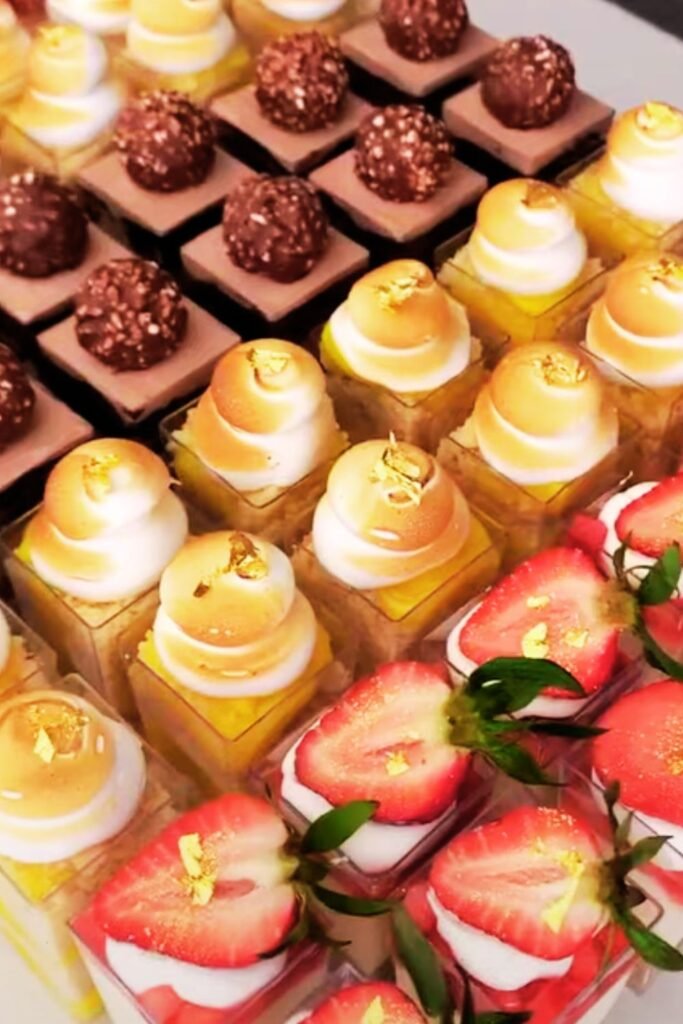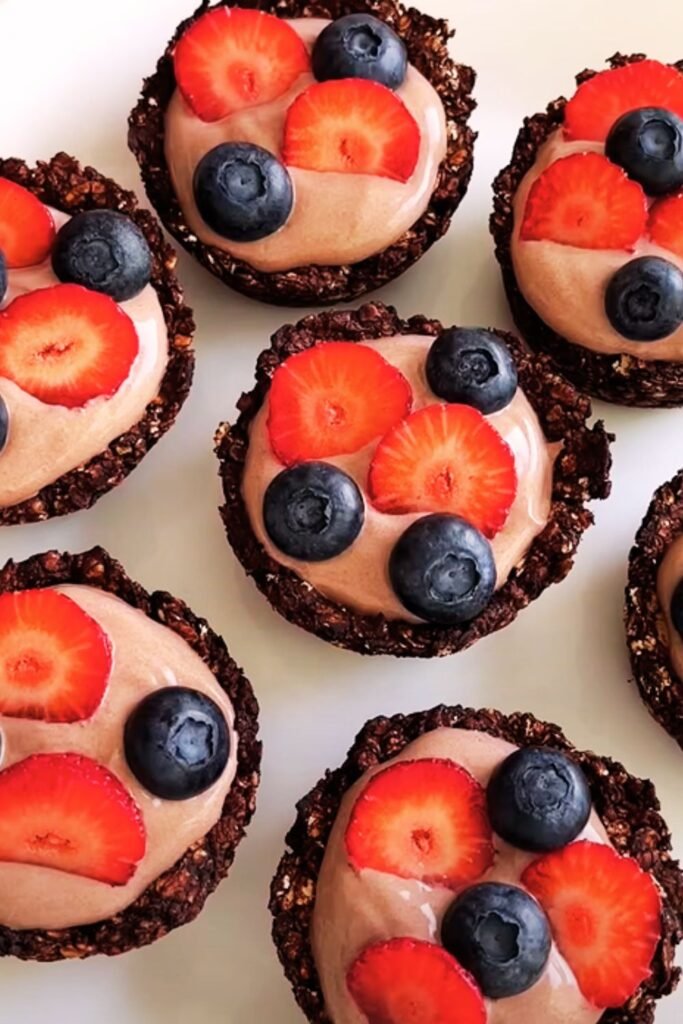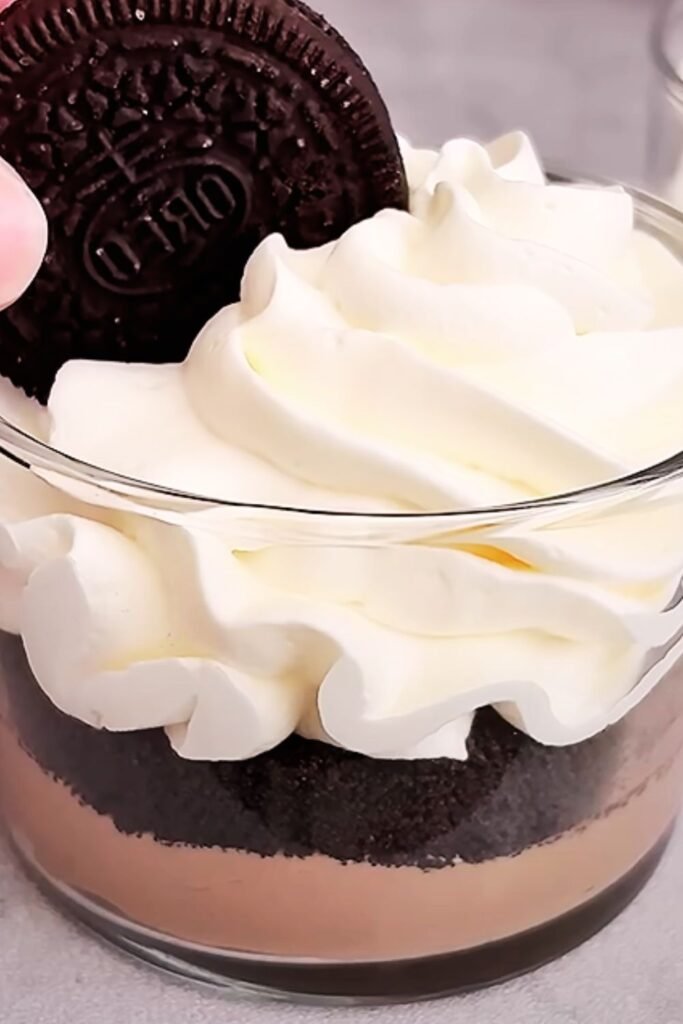I’ve discovered something magical about serving desserts in individual cups – they transform any gathering into an elegant affair while keeping things surprisingly simple. After years of hosting parties and experimenting in my kitchen, I can confidently say that cup desserts are the secret weapon every host needs. They’re portion-controlled, visually stunning, and incredibly convenient for both preparation and serving.
The beauty of desserts in a cup lies in their versatility and presentation. Whether I’m planning a casual backyard barbecue or an upscale dinner party, these individual treats never fail to impress my guests. They eliminate the need for cutting and serving, reduce cleanup, and allow me to prepare everything in advance. Plus, there’s something inherently satisfying about having your own personal dessert – it feels special and indulgent.
Why Cup Desserts Are Perfect for Parties
Cup desserts have revolutionized the way I approach party planning. They solve numerous hosting challenges while adding an element of sophistication that traditional desserts sometimes lack. The individual presentation creates anticipation and excitement among guests, turning dessert time into a special moment.
From a practical standpoint, cup desserts are incredibly manageable. I can prepare them hours or even days in advance, depending on the recipe. This advance preparation is crucial when I’m juggling multiple aspects of party planning. The individual portions also help me control serving sizes and ensure everyone gets an equal share of the delicious treats.
The visual impact of cup desserts cannot be overstated. When I arrange them on a dessert table or pass them around on trays, they create an immediate “wow” factor. The layered textures and colors visible through clear containers add depth and interest that guests find irresistible.
Essential Equipment and Container Selection
Before diving into specific recipes, I want to share the equipment and containers that have become indispensable in my cup dessert adventures. The right tools make all the difference in both preparation and presentation.
Glass Containers:
- Clear glass cups showcase layers beautifully
- Mason jars provide rustic charm and practical lids
- Wine glasses add elegance for formal occasions
- Shot glasses work perfectly for mini portions
Plastic Options:
- Disposable clear cups for large gatherings
- Reusable plastic containers for outdoor events
- Parfait cups with built-in stability
Specialized Tools:
- Piping bags for precise layering
- Long-handled spoons for easy assembly
- Measuring cups for consistent portions
- Offset spatulas for smooth tops
| Container Type | Best For | Capacity | Advantages |
|---|---|---|---|
| Mason Jars | Casual parties, outdoor events | 8-12 oz | Portable, reusable, rustic charm |
| Wine Glasses | Formal dinners, elegant affairs | 6-8 oz | Sophisticated presentation, stable base |
| Clear Plastic Cups | Large gatherings, budget-friendly | 4-10 oz | Disposable, lightweight, cost-effective |
| Parfait Glasses | Layered desserts, special occasions | 6-10 oz | Designed for layering, elegant shape |
10 Spectacular Cup Dessert Ideas
1. Classic Tiramisu Cups
My tiramisu cups have become legendary among my friends and family. I start with strong espresso-soaked ladyfingers, layer them with rich mascarpone mixture, and dust with cocoa powder. The individual presentation allows each guest to experience the perfect balance of coffee, cream, and chocolate in every spoonful.
The key to exceptional tiramisu cups lies in the quality of ingredients and proper soaking technique. I brew strong espresso and let it cool completely before adding a splash of coffee liqueur. The mascarpone mixture should be light and airy, achieved by carefully folding whipped cream into the mascarpone and sugar base.
Preparation time: 30 minutes Assembly time: 15 minutes Chilling time: 4 hours minimum
2. Decadent Chocolate Trifle
These chocolate trifle cups satisfy even the most serious chocolate cravings. I layer rich chocolate cake, silky chocolate pudding, and fresh whipped cream, creating a dessert that’s both visually stunning and incredibly delicious. The contrast of textures – from moist cake to smooth pudding to airy cream – creates an unforgettable eating experience.
I prefer using homemade chocolate cake, but high-quality store-bought cake works beautifully when time is limited. The chocolate pudding should be thick enough to hold its shape but creamy enough to blend seamlessly with the other components.
3. Fresh Berry Parfait
Nothing says summer elegance like fresh berry parfaits. I alternate layers of vanilla yogurt or whipped cream with seasonal berries and crunchy granola. The natural sweetness of ripe berries combined with the tangy cream creates a perfectly balanced dessert that’s both refreshing and satisfying.
The success of berry parfaits depends heavily on fruit selection. I choose berries at their peak ripeness, ensuring optimal flavor and texture. Strawberries should be bright red and fragrant, blueberries should be plump and sweet, and raspberries should be deep in color and easily separate from their core.

4. Lemon Posset Cups
Lemon posset represents the epitome of elegant simplicity. With just three ingredients – heavy cream, sugar, and lemon juice – I create a dessert that’s both sophisticated and surprisingly easy to prepare. The magic happens when the acid from the lemon juice naturally thickens the cream, creating a silky, set texture without any additional thickeners.
The beauty of lemon posset lies in its make-ahead nature. I can prepare these cups up to two days in advance, making them perfect for stress-free entertaining. The bright, citrusy flavor cleanses the palate and provides a refreshing finish to any meal.
5. Banoffee Pie Cups
These individual banoffee pie cups capture all the beloved flavors of the classic British dessert in a convenient, portable format. I start with a buttery biscuit base, add a layer of rich dulce de leche, arrange fresh banana slices, and top with billowy whipped cream.
The key to perfect banoffee cups is timing. I assemble them close to serving time to prevent the bananas from browning and the biscuit base from becoming soggy. The contrast between the sweet, sticky dulce de leche and the fresh, mild bananas creates an irresistible flavor combination.
6. Strawberry Shortcake Cups
My strawberry shortcake cups reimagine the classic American dessert in an elegant, individual format. I layer crumbled shortcake, macerated strawberries, and fresh whipped cream, creating a dessert that’s both nostalgic and refined.
The secret to exceptional strawberry shortcake cups lies in properly preparing the strawberries. I slice them and toss with sugar about 30 minutes before serving, allowing them to release their natural juices and create a syrup that flavors the entire dessert.
7. Chocolate Mousse Cups
Rich, airy chocolate mousse served in individual cups never fails to impress. I whip eggs, chocolate, and cream into a cloud-like consistency that melts on the tongue while delivering intense chocolate flavor. The individual presentation allows me to garnish each cup uniquely, perhaps with a fresh raspberry, a mint sprig, or a delicate chocolate curl.
The texture of chocolate mousse is crucial – it should be light enough to feel airy but rich enough to satisfy chocolate cravings. I achieve this balance by carefully controlling the temperature when combining ingredients and whipping the mixture to the perfect consistency.

8. Key Lime Pie Cups
These tangy, creamy key lime pie cups transport guests to a tropical paradise with every spoonful. I combine the traditional graham cracker crust with smooth key lime filling, creating a dessert that’s both familiar and exciting in its individual presentation.
Authentic key lime juice makes all the difference in these cups. The unique tartness and floral notes of key limes cannot be replicated with regular lime juice. I source key limes whenever possible, though bottled key lime juice serves as an acceptable alternative when fresh fruits are unavailable.
9. Red Velvet Trifle Cups
Red velvet trifle cups offer dramatic visual impact with their striking red and white layers. I alternate moist red velvet cake with cream cheese frosting and sometimes add a layer of fresh berries for color contrast and flavor complexity.
The cream cheese frosting should be perfectly smooth and not overly sweet, allowing the subtle chocolate flavor of the red velvet cake to shine through. I often add a touch of vanilla extract to enhance the overall flavor profile.
10. Peach Cobbler Cups
These individual peach cobbler cups capture the essence of summer in a convenient, elegant format. I layer spiced peaches with buttery cobbler topping, creating a dessert that’s both comforting and sophisticated.
The peaches should be ripe but not overly soft, maintaining some texture even after cooking. I prefer using fresh peaches when they’re in season, but high-quality frozen peaches work well during off-season months.
Advanced Techniques for Professional Results
Creating restaurant-quality cup desserts requires attention to detail and proper technique. Over the years, I’ve developed methods that consistently produce beautiful, delicious results.
Layering Techniques: The visual appeal of cup desserts depends heavily on clean, distinct layers. I use a piping bag or squeeze bottle for precise application of creams and sauces. For crumbled ingredients like cookies or cake, I use a spoon and gentle tapping to create even distribution.
Temperature Control: Many cup desserts benefit from specific temperature management. Mousses and puddings should be completely cool before assembly, while some components like fruit may benefit from slight warming to release flavors.
Timing Strategies: I’ve learned that timing is everything in cup dessert preparation. Some components can be made days in advance, while others require last-minute assembly. I create preparation schedules that maximize efficiency while ensuring optimal results.
Flavor Combinations and Seasonal Adaptations
| Season | Primary Fruits | Flavor Profiles | Suggested Combinations |
|---|---|---|---|
| Spring | Strawberries, Rhubarb, Apricots | Fresh, light, floral | Strawberry-rhubarb, apricot-vanilla |
| Summer | Berries, Peaches, Cherries | Bright, sweet, refreshing | Mixed berry, peach-ginger, cherry-chocolate |
| Fall | Apples, Pears, Cranberries | Warm, spiced, comforting | Apple-cinnamon, pear-caramel, cranberry-orange |
| Winter | Citrus, Pomegranate, Persimmon | Tart, rich, warming | Lemon-lavender, pomegranate-chocolate, persimmon-spice |
Seasonal adaptation keeps my dessert offerings fresh and exciting throughout the year. I adjust ingredients based on what’s available and what flavors complement the season’s mood and weather.
Dietary Modifications and Alternatives
Modern entertaining requires consideration of various dietary needs and preferences. I’ve developed modifications for my cup desserts that accommodate different requirements without compromising flavor or presentation.
Gluten-Free Options:
- Replace traditional cake with almond flour or gluten-free flour blends
- Use gluten-free cookies for crumb layers
- Naturally gluten-free options like mousses and puddings
Dairy-Free Alternatives:
- Coconut cream as a substitute for heavy cream
- Cashew-based creams for rich textures
- Dairy-free chocolate and butter alternatives
Sugar-Free Modifications:
- Natural sweeteners like stevia or monk fruit
- Fresh fruit for natural sweetness
- Sugar-free chocolate and pudding mixes
Vegan Adaptations:
- Aquafaba as an egg substitute in mousses
- Plant-based milk alternatives
- Vegan chocolate and cream substitutes

Presentation and Garnishing Techniques
The final presentation elevates cup desserts from simple treats to memorable experiences. I’ve developed a repertoire of garnishing techniques that add visual appeal and flavor complexity.
Fresh Garnishes:
- Mint leaves for color and freshness
- Edible flowers for elegance
- Fresh fruit slices for natural beauty
- Herb sprigs for unexpected flavor notes
Textural Elements:
- Toasted nuts for crunch
- Chocolate shavings for richness
- Cookie crumbs for contrast
- Caramel or chocolate drizzles for sophistication
Creative Toppings:
- Whipped cream rosettes
- Candied fruit pieces
- Flavored dusts and powders
- Edible glitter for special occasions
Storage and Make-Ahead Strategies
One of the greatest advantages of cup desserts is their make-ahead potential. I’ve developed storage strategies that maintain quality while maximizing convenience.
Refrigeration Guidelines: Most cup desserts benefit from refrigeration, but timing varies by recipe. Cream-based desserts should be consumed within 2-3 days, while fruit-based options may last slightly longer.
Freezing Considerations: Some components freeze well individually but may not maintain quality when frozen as complete desserts. I often prepare and freeze cake layers or fruit compotes separately.
Assembly Timing: I’ve learned which desserts can be fully assembled in advance and which require last-minute touches. This knowledge allows me to plan preparation schedules that minimize stress while ensuring optimal results.
Troubleshooting Common Issues
Even experienced bakers encounter challenges with cup desserts. I’ve compiled solutions to the most common problems I’ve encountered.
Separation Issues: When creams separate or curdle, temperature is usually the culprit. I ensure all ingredients are at proper temperatures before combining and avoid overmixing.
Soggy Bottoms: Moisture management is crucial in layered desserts. I use barriers like chocolate layers or properly drained fruits to prevent sogginess.
Uneven Layers: Consistent portioning and proper tools solve most layering issues. I measure ingredients carefully and use appropriate dispensing tools for each component.
Cost-Effective Party Planning
Cup desserts can be budget-friendly without sacrificing quality or presentation. I’ve developed strategies for creating impressive desserts while managing costs.
Ingredient Substitutions:
- Use seasonal fruits when they’re most affordable
- Substitute expensive ingredients with accessible alternatives
- Buy in bulk for larger gatherings
Portion Control: Individual servings naturally control portions and costs. I can calculate exact quantities needed and minimize waste.
Advance Preparation: Making components ahead allows me to shop sales and spread costs over time rather than purchasing everything at once.
Q&A Section
Q: How far in advance can I prepare cup desserts? Most cup desserts can be prepared 1-2 days in advance, though some components may need last-minute assembly. Cream-based desserts generally maintain quality for 2-3 days when properly stored in the refrigerator.
Q: What’s the best way to transport cup desserts to a party? I use sturdy carriers with individual compartments or place cups in boxes with dividers. Covering with plastic wrap prevents contamination while maintaining presentation.
Q: Can I make larger portions in bigger containers? Absolutely! The recipes scale well for larger containers, though you may need to adjust ingredient proportions slightly. Consider presentation and serving logistics when choosing container sizes.
Q: How do I prevent layers from mixing together? Allow each layer to set before adding the next, use proper consistency for each component, and consider using barrier layers like chocolate or cookie crumbs to maintain separation.
Q: What’s the most foolproof cup dessert for beginners? I recommend starting with parfaits or trifles, as they’re forgiving and don’t require precise technique. The layering is straightforward, and minor imperfections often add to their rustic charm.
Q: How do I calculate quantities for large groups? I typically plan for 1-1.5 cup desserts per person, depending on the meal size and other dessert options. Having a few extra is always better than running short.
Q: Can I use different types of containers for the same dessert? Yes! Mixing container types can create visual interest on a dessert table. Just ensure the portion sizes remain consistent and the containers complement each other aesthetically.
Q: What’s the best way to clean and reuse glass containers? I soak containers in warm, soapy water immediately after use, then use a bottle brush for thorough cleaning. For stubborn residue, a paste of baking soda and water works wonderfully.
Q: How do I prevent condensation from affecting presentation? Keep desserts refrigerated until just before serving, and use covers or plastic wrap to prevent moisture buildup. Remove covers just before presentation for the best appearance.
Q: Are there any ingredients I should avoid in cup desserts? Avoid ingredients that release excessive moisture or change texture dramatically over time. Some fruits may brown or release too much liquid, and certain creams may separate if not properly stabilized.
The world of cup desserts offers endless possibilities for creative expression and memorable entertaining. These individual treats combine convenience, elegance, and delicious flavors in ways that traditional desserts simply cannot match. Whether I’m hosting an intimate dinner party or a large celebration, cup desserts have become my go-to solution for impressive, manageable, and utterly delicious endings to any meal.